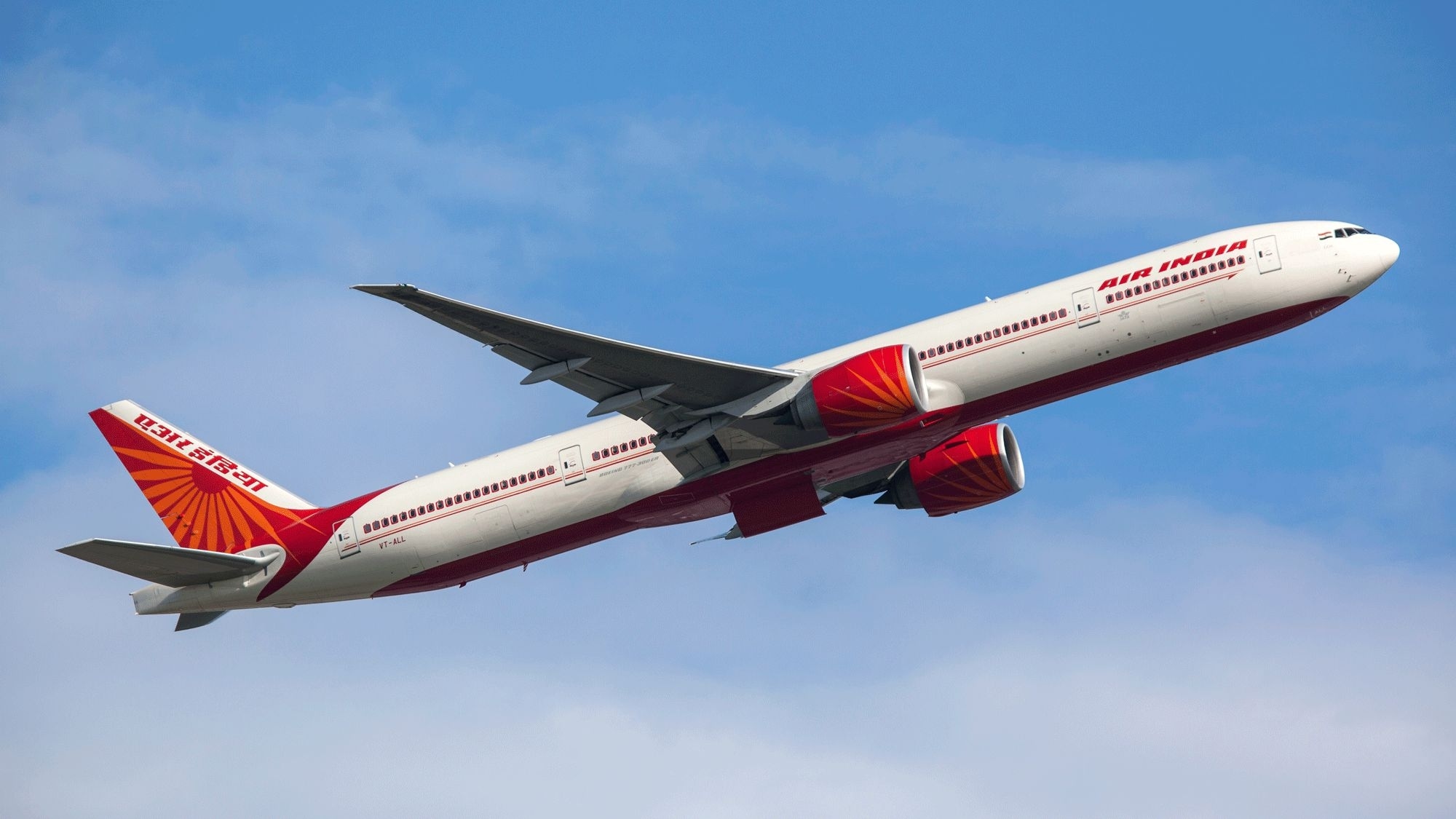Angel One Ltd., GAIL (India) Ltd. and Tata Motors Ltd. were among the top companies on brokerages' radar on Thursday.
Further, Jefferies has weighed in on the pharmaceutical industry, stating that the broad reciprocal tariffs have exempted the sector for now. However, the possibility of a future pharma-specific tariff order cannot be completely ruled out.
In addition, Kotak Securities said that the 26% reciprocal tariffs imposed on India will not be an additional burden on the previously announced 25% tariffs on vehicles and parts imported into the US.
NDTV Profit tracks what analysts are saying about various stocks and sectors. Here are the analyst calls to keep an eye out for on Thursday.
Morgan Stanley India Strategy
10 reasons why Morgan Stanley believes Indian stocks look interesting:
The recent market decline was orderly, with no significant increase in implied volumes.
The RBI continues to adopt dovish policies.
The rupee’s overvaluation has corrected significantly.
India’s trade deal with the US should differentiate it amid global trade disruptions.
Sluggish oil prices are improving India’s terms of trade.
The resilience of retail investors during the correction suggests structural buying behavior rather than opportunistic trading.
A turn in Foreign Portfolio Investor (FPI) debt flows indicates increased confidence in India’s macroeconomic stability and currency.
Foreign investor positioning is weak, but there are signs of a positive shift in sentiment towards India.
Equity valuations have become more attractive, with the BSE Sensex now back to November 2020 levels in gold ounces.
Morgan Stanley’s proprietary sentiment indicator has dropped to the strong buy zone, a level last seen in September 2013, October 2008, and September 2001.
Cyclicals are preferred over defensives, and small/mid-caps over large caps.
Overweight on financials, consumer discretionary, industrials, and technology; underweight on other sectors.
The current market is likely to be a stock-picker’s market, rather than being macro-driven as it was post-Covid.
PL India Strategy
Despite the 26% tariff, India remains one of the least-tariffed Asian exporters.
Various sectors may experience different impact:
Textiles & Apparel: The tariff advantage creates an opportunity for India in the U.S. market.
Footwear: Tariffs on Vietnam could benefit India’s footwear exports.
Light Manufacturing: Tariffs on competing countries open up opportunities for India in toys, textiles, and leather exports.
Electronics: The iPhone-led surge in exports may face a 26% tariff hit, but India remains favored over China.
Machinery Exports: The sector faces pressure due to tariffs.
Chemicals: The outlook is mixed, with India potentially gaining market share from China in specific niches.
Gems & Jewellery: The sector is at high risk, as the 26% tariff could impact India’s $10 billion U.S. market.
UBS India Strategy
India’s reciprocal tariff of 26% is higher than expected.
The 26% tariff is negotiable and will take effect from April 9, 2025.
Pharmaceuticals, which account for approximately 10% of exports, are not included in the tariffs but will undergo a separate review.
The high tariff could make some exports unviable, which is a negative development for the market.
US exports account for approximately 2% of India’s GDP.
Brokerages on Pharma
Citi
The pharmaceutical sector has been excluded from the new US tariffs.
It remains unclear whether this exemption is a short-term or medium-term arrangement.
If pharmaceuticals continue to be excluded from tariffs, it would be a positive development for the sector.
Jefferies
US reciprocal tariffs have exempted the pharmaceutical industry for now.
However, the possibility of a pharma-specific tariff order in the future cannot be ruled out.
At present, the impact on Indian pharma companies is minimal, which could lead to a rally in US-focused generic pharma stocks.
The generic pharma industry, which significantly reduces drug costs in the US, may continue to be exempt from tariffs.
Kotak Securities on Wires and Cables
The US tariff order has exempted certain goods, including copper.
It is still uncertain whether wires and cables will be classified as copper articles and therefore exempted.
If wires and cables are not exempt:
- The US imports over $30 billion worth of insulated wires and cables annually, with Mexico contributing over 50%, China over 10%, and India about 1.5%.
- Indian W&C manufacturers claim that their landed cost in the US is now competitive compared to Mexico.
- Apar Industries derives 50% of its export revenue from North America.
- Polycab's North American exports contributed 20% of total export revenues in the first nine months of financial year 2025.
- KEI Industries planned to scale up US exports from Rs 200 crore in the current year to Rs 500 crore next year.
- Due to these developments, Indian W&C exports to other markets may also face increased competition.
- There was optimism about India scaling up its presence in the US market over the coming years. However, reciprocal tariffs may put Indian W&C exports at a disadvantage.
JPMorgan on QSR
In the fourth quarter the brokerage sees stable comps as material pick-up is yet to come through.
Demand trends remain stable with no material uptick; delivery outperforms dine-in.
Pace of store expansion remains healthy (ex-Pizza Hut)
Menu innovation - Creating excitement in the mid/premium ends.
Muted store level operating leverage and mix to weigh on operating margins.
Kotak Securities on Auto
Major car-exporting countries contribute approximately 45-50% of all US auto imports.
This means that nearly half of the imported vehicles will now be subject to a 25% tariff.
In addition to vehicles, around 150 auto parts will also face a 25% tariff starting from May 3.
The 26% reciprocal tariffs imposed by India will not be an additional burden on the previously announced 25% tariffs on vehicles and parts imported into the U.S.
Implications for Auto Companies Under Coverage:
Tata Motors:
- Jaguar Land Rover generates about 25% of its revenue from the US and exports its cars from the EU/UK.
- If the tariff costs are passed on to consumers, US sales volumes could decline by 25-35%, translating to an overall volume impact of 5-10%.
- This could lead to an estimated 15-20% cut in earnings per share for JLR.
Sona BLW:
- The company derives 40-43% of its revenue from the U.S., primarily from local U.S. brands.
- If original equipment manufacturers (OEMs) absorb half of the tariff costs, Sona BLW’s overall profitability could be impacted by 400-500 basis points (bps), leading to a more than 20% decline in EPS.
SAMIL:
- The company operates local plants in the U.S. and will not be directly impacted by the tariffs.
- However, a potential drop in overall U.S. auto sales could negatively impact the company's revenue.
Bharat Forge:
- Bharat Forge generates 24-30% of its revenue from the U.S., primarily through exports from India.
- A significant portion of this revenue comes from the Class 8 truck segment, where the impact on volume may be limited.
- However, tariffs on auto components could significantly impact margins, potentially reducing overall EPS by mid-teen percentages.
Balkrishna Industries, Timken, and CEAT:
- These companies derive approximately 15-18%, 11-13%, and 6-9% of their total revenue, respectively, from the U.S.
Other companies that may experience a marginal impact include Mahindra & Mahindra, Eicher Motors, Schaeffler India, and CIE Automotive India.
Kotak Securities on Angel One
Kotak Securities initiates a Buy on Angel One, with a target price of Rs 2,800.
The company has a strong execution record and benefits from multiple growth drivers.
It is still in the early stages of revenue diversification.
Recovery over the coming years is expected to drive a 20% EPS CAGR over financial year 2027-28.
The stock’s reasonable valuation and strong execution track record underpin the positive view.
Nuvama on Chola Finance
Nuvama initiates a Hold on Chola Finance, with a target price of Rs 1,600.
The company is expected to maintain best-in-class earnings growth.
There is an uptick in delinquencies, but overall asset quality remains strong.
At 4.1x BV FY26E, the positives such as strong growth, corporate governance, strong parentage, and potential rate cuts appear priced in.
Cyclicality in the CV business and asset quality in new ventures remain key concerns.
Citi on GMR Airports
Citi initiates a Buy on GMR Airports, with a TP of Rs 90.
The stock’s strong mid-term growth outlook justifies a valuation premium.
Citi forecasts an 8% traffic CAGR from financial year 2024-27E driven by its unique assets.
The company is expected to turn profitable in financial year 2026E, with financial year 2027E earnings 6% above Street estimates.
Brokerages on M&M Finance
Macquarie maintains an Underperform rating on M&M Finance, with a target price of Rs 235.
Loan growth has been lower than expectations.
Business assets growth has declined in recent quarters.
Given the volatile Provision Coverage Ratio last quarter, credit cost trends remain a key concern.
JPMorgan on GAIL
JPMorgan maintains a Neutral rating on GAIL but cuts target price to Rs 186 from Rs 235.
While the stock has reasonable value, lower oil prices are a concern.
Falling oil prices could negatively impact petchem, LPG, trading, and transmission income.
Excitement around a favorable tariff review appears premature.
Brokerages on PNB Housing
Morgan Stanley
Morgan Stanley maintains an Underweight rating on PNB, with a target price of Rs 95.
Domestic loan and deposit growth have decelerated after a strong last quarter.
The domestic loan book grew 0.6% quarter-on-quarter and 13% year-on-year, compared to 14% year-on-year last quarter.
Domestic deposits increased 2.4% quarter-on-quarter and 13% year-on-year, slightly lower than the 14% YoY growth previously.
The bank continues to gain market share, but this growth is likely happening at lower spreads.
Citi
Maintains 'sell' with a target price of Rs 91
Fourth-quarter business update – momentum eases after robust 9M, as guided
Expect RAM segments to be the primary growth driver
Building in ~1% quarter-on-quarter growth in NII and 4 bps quarter-on-quarter fall in NIMs
Contained credit cost at ~20-30bps could help it register RoA of 0.9-1%
Morgan Stanley on Tata Motors
Morgan Stanley maintains an Equal-weight rating on Tata Motors, with a TP of Rs 853.
March US retail sales indicate a strong quarter, but sustainability is uncertain.
In the fourth quarter, JLR’s US retail sales grew 16% year-on-year.
The mix of high-margin models declined to 75% from 78% in third quarter.
Incentives for the quarter increased 68% YoY and 6% quarter-on-quarter.
In March, Land Rover’s retail sales grew 15% YoY, while Jaguar’s sales declined 49% YoY as it remains in the phase-out stage.
The US market accounted for ~23% of JLR's sales in financial year 2024, with an estimated increase to 30% in third quarter.
JLR, being a small-scale player without a US production facility, faces competitive disadvantages.
Tariff increases could significantly impact US sales unless rolled back.
The company may lower its 10% financial year 2026 EBIT margin guidance due to these challenges.
Jefferies on Siemens
Jefferies maintains a Buy on Siemens, with a target price of Rs 7,215.
The Ex-Energy business is expected to trade between Rs 2,084 and Rs 2,778 based on a 30-40x PE for Mar-27E.
The Energy business is projected to witness 2x EPS CAGR from FY24-27E, outpacing the Ex-Energy segment.
The Ex-Energy business is likely to trade at a 10-13% discount to Siemens’ current 40x PE for Mar-27E.
The Energy business is expected to list at a 46x PE for Mar-27E, representing a 15% premium to Siemens' current multiple.
 RECOMMENDED FOR YOU
RECOMMENDED FOR YOU

US Tariffs: Only Sun Pharma Exposed To Some Headline Risk, But With Limited Earnings Impact
 Sep 28, 2025
Sep 28, 2025

Laurus Labs Downplays Impact Of New US Pharma Tariffs On Branded Drugs
 Sep 26, 2025
Sep 26, 2025

Tariff Impact Transitionary, Full-Year GDP Growth Forecast Unchanged At 6.3–6.8%: CEA
 Aug 29, 2025
Aug 29, 2025

'Real Damage To Unfold Gradually, Market Won't React Immediately': Manishi Raychaudhuri On US Tariff Impact
 Aug 26, 2025
Aug 26, 2025


